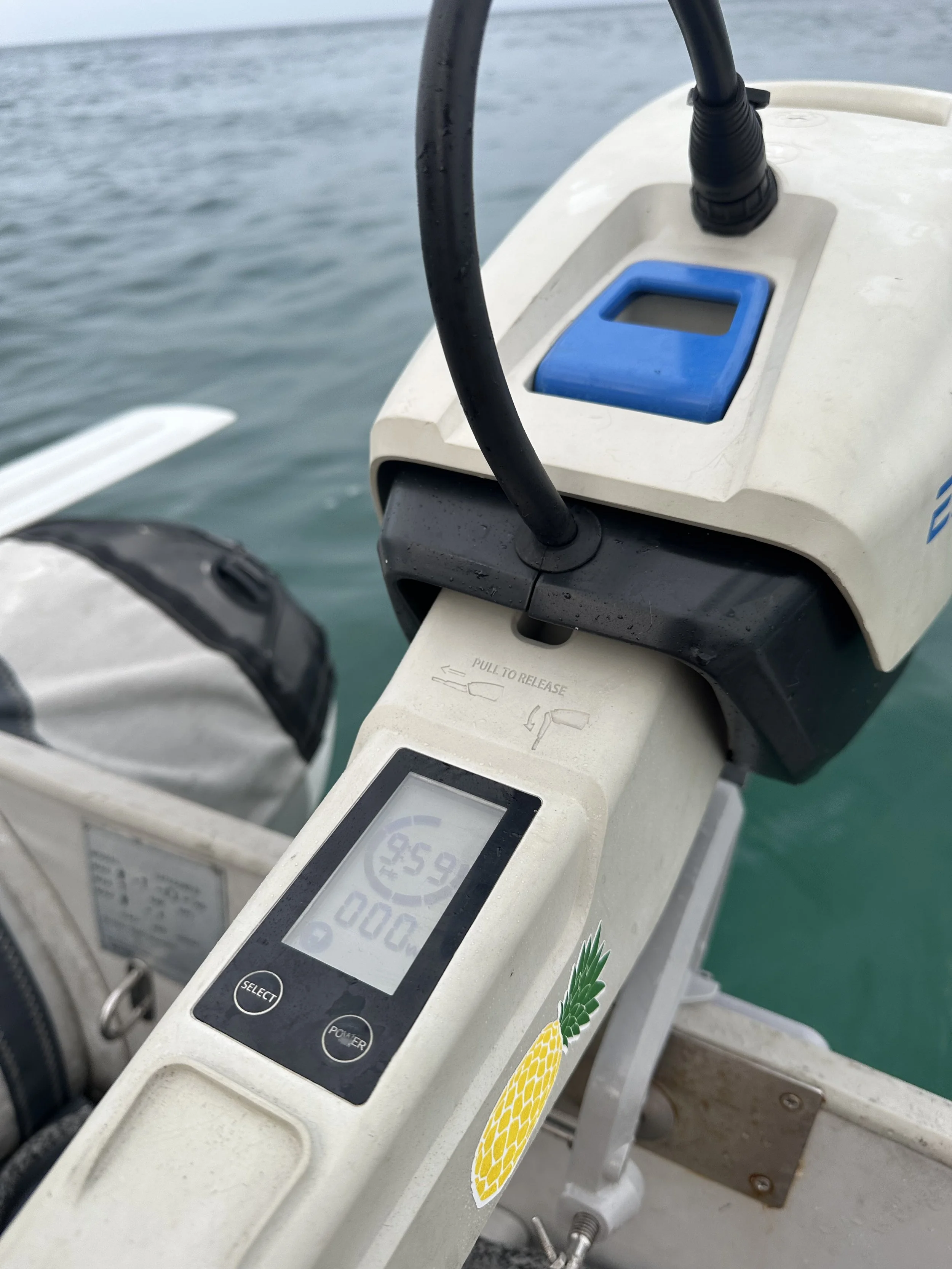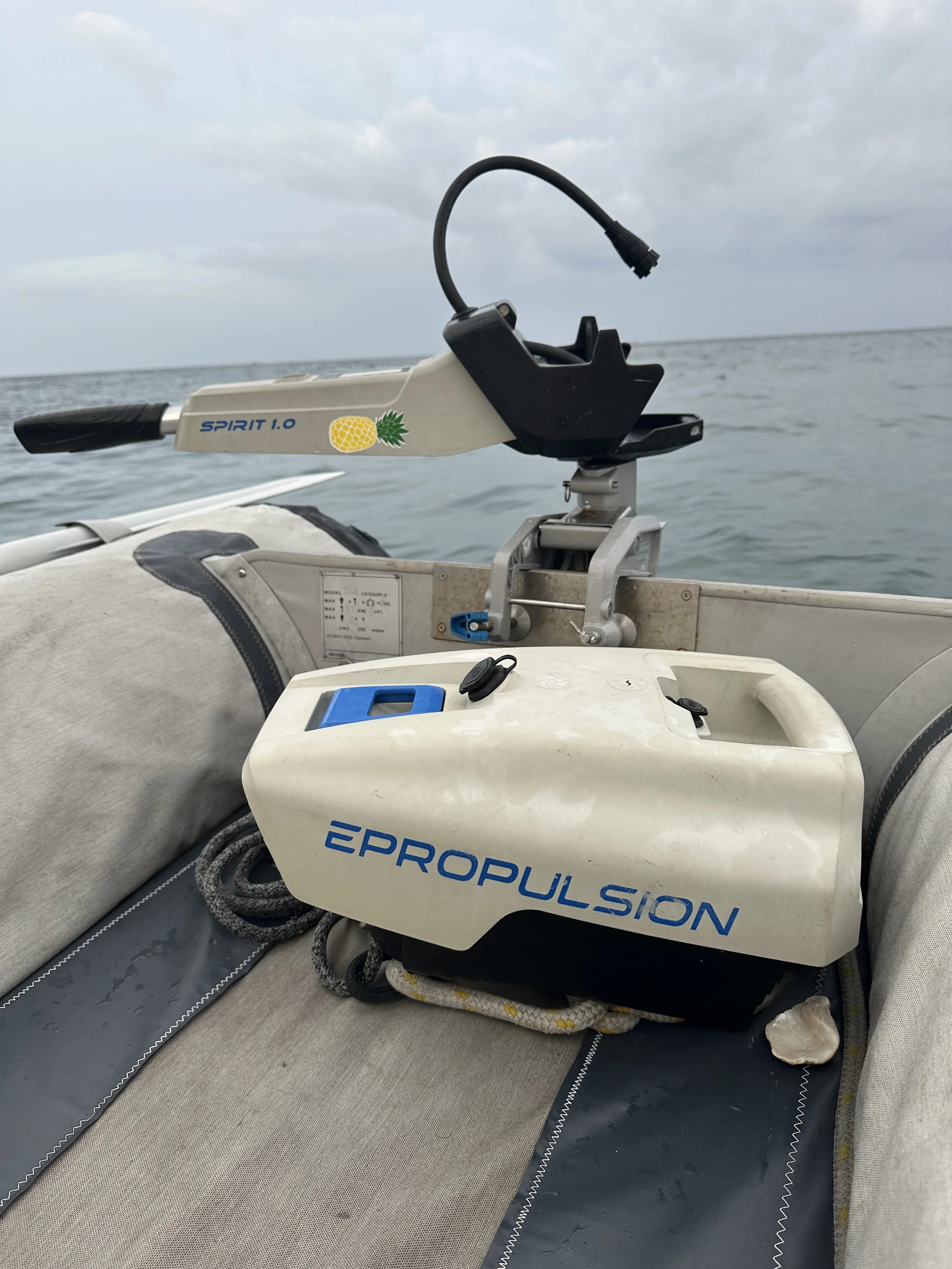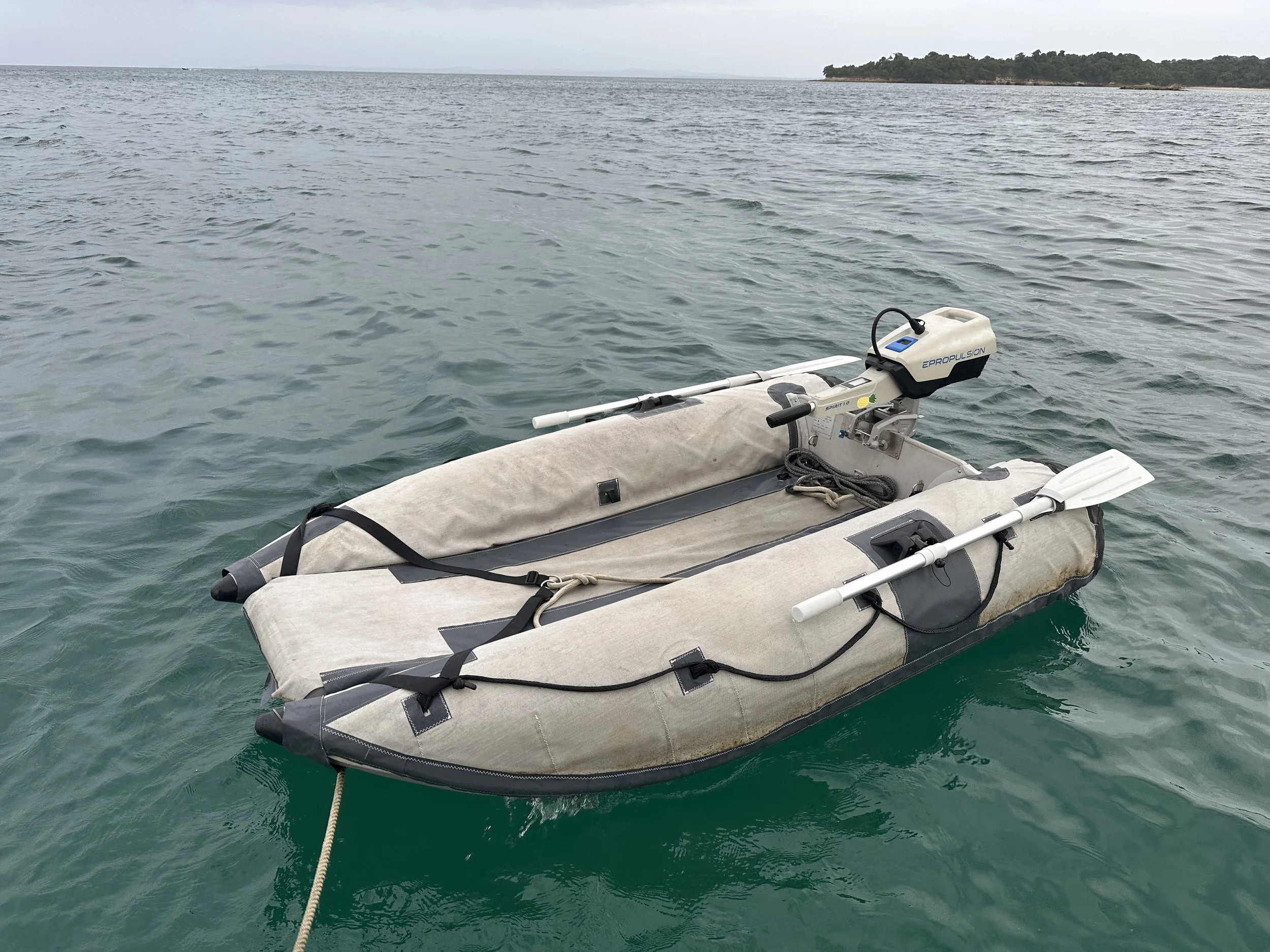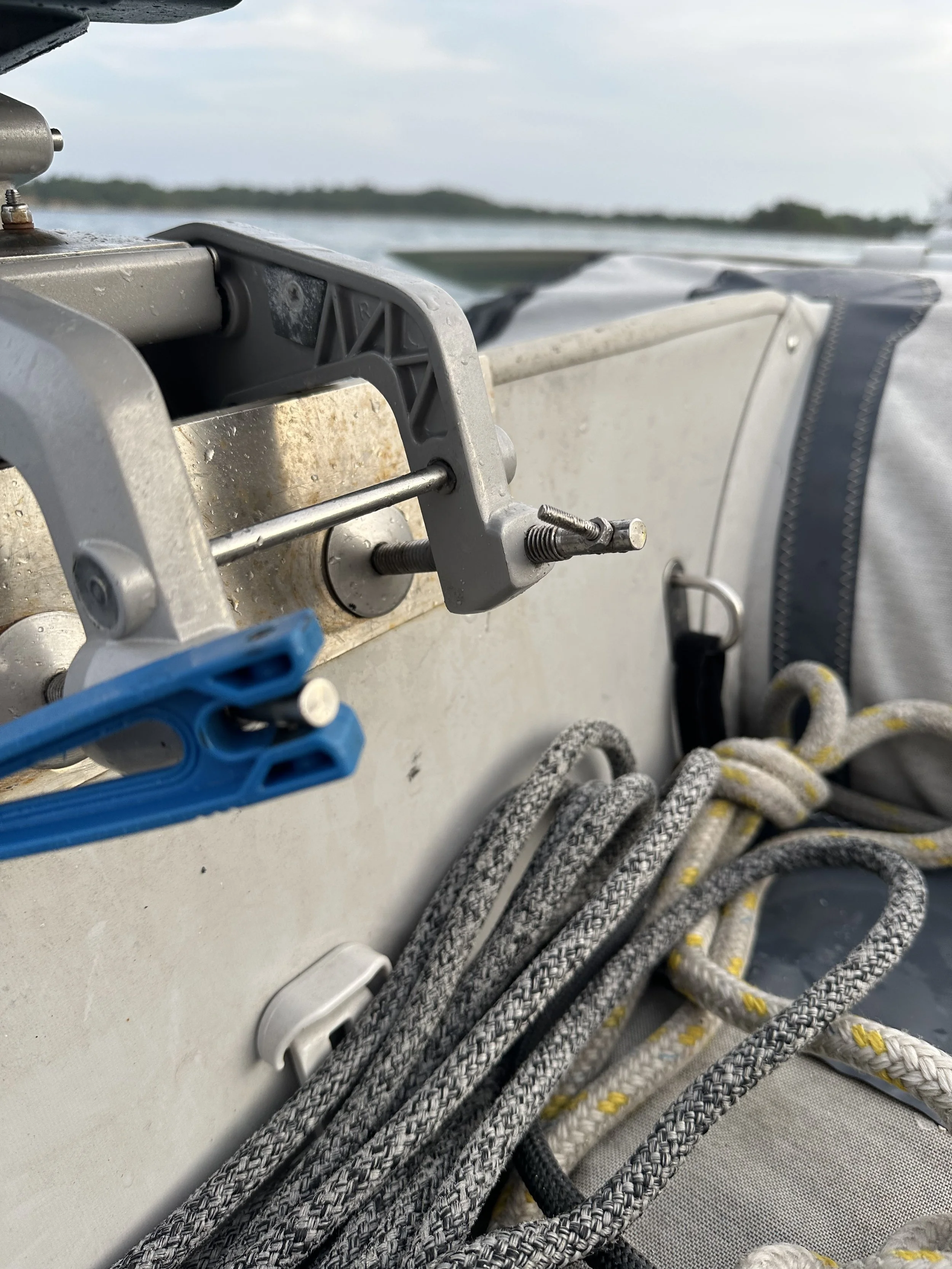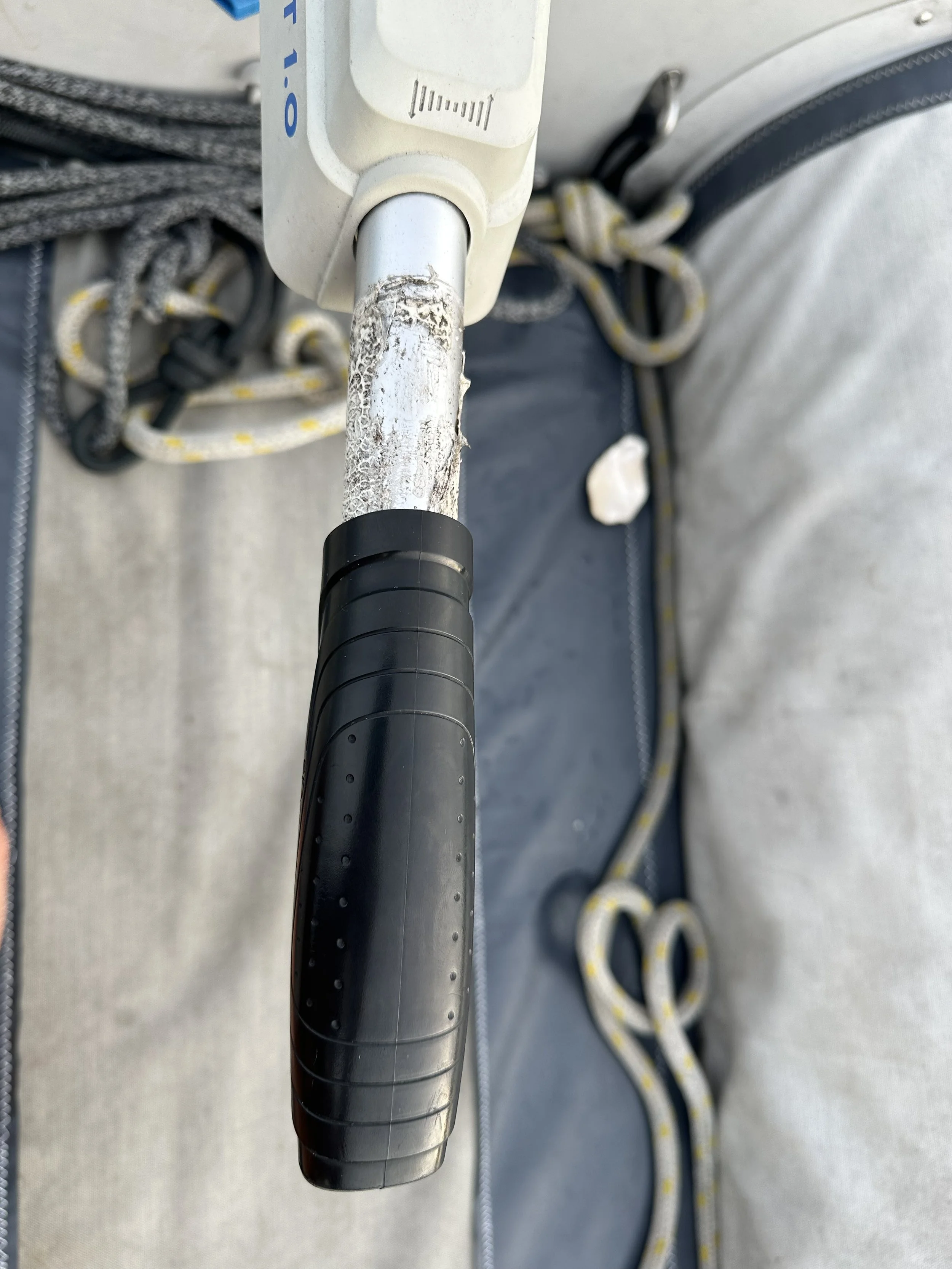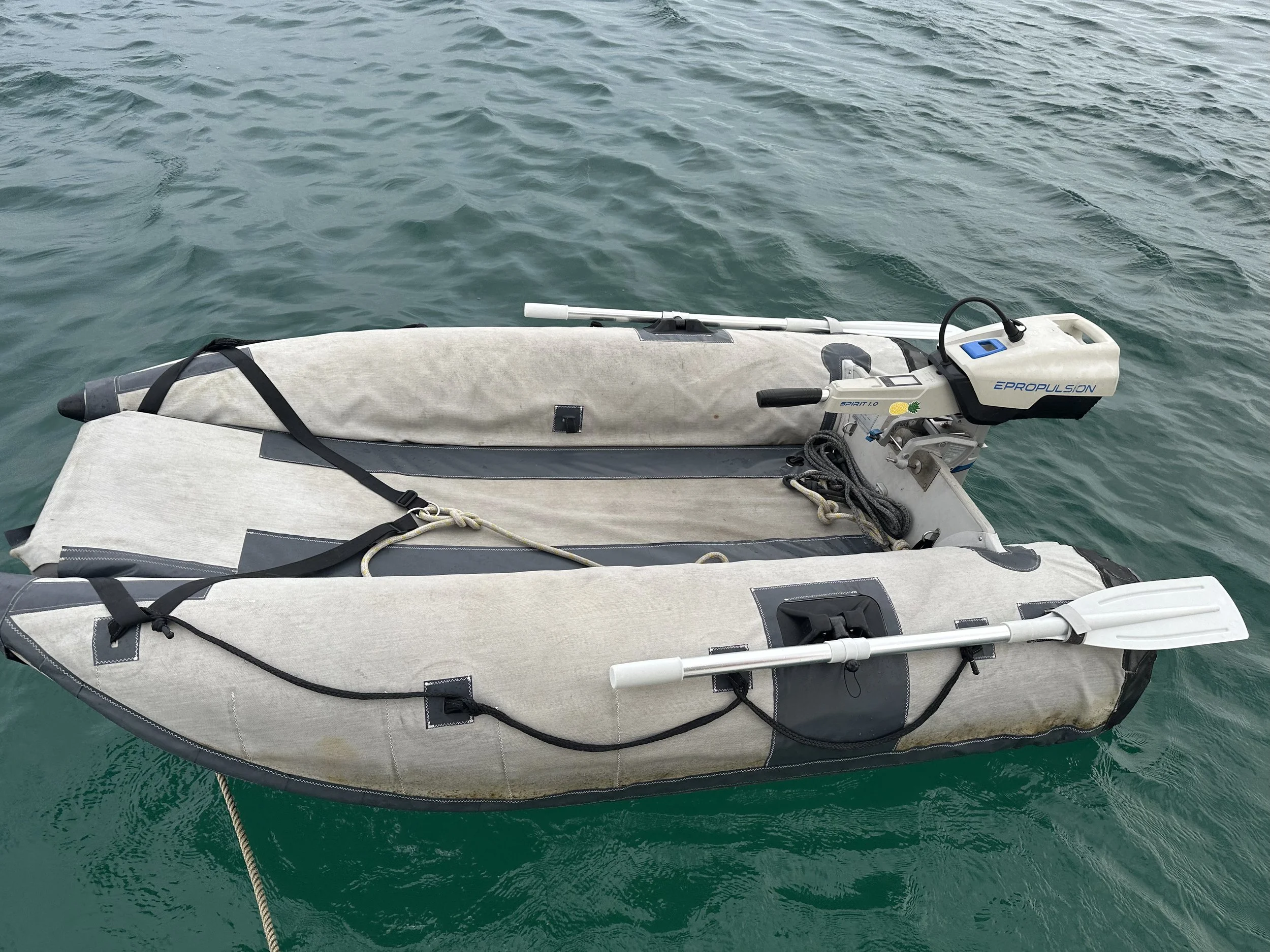3 years with an electric outboard: a review
E-Propulsion Spirit 1.0
The story
About three years ago, we bought our E-Propulsion Spirit 1.0 second-hand from a couple in Salzburg. They had used the motor for their homemade wooden boat on Lake Mattsee and were so happy with it that they wanted to buy another one (but with a long shaft). It was probably our nicest Willhaben purchase to date (a second-hand goods platform in Austria). Over coffee and freshly baked cake, we talked about the couple's DIY projects and our plans to travel the world by sailboat. At the end of our coffee break, we were 1,500 euros poorer, but we had a well-maintained electric outboard motor built in 05/2020. The original price of the model was around 2,200 euros at the time. But how did we decide to go for an electric outboard?
Why an electric outboard?
We were used to charter holidays where the outboard motors worked for half a week at best. In the end, we always decided not to opt for the outboard motor if there was an extra charge, as we could row for most of the routes and, as mentioned, the motors usually broke down after half a week anyway. As new boat owners with no technical background, we are happy with things that work and are maintenance-free. We also find the self-sufficiency that we have with an electric outboard motor and no additional petrol cans attractive, as our 10-metre (33 feet) sailing boat is not exactly bursting with storage space. The size of the dinghy is also limited due to the size of the boat, so the equivalent 2.5 hp is not really a deal breaker for us. We bought our sailing boat without a dinghy and associated motor, so we can choose from the full range of products on the market. We opt for a popular electric setup, a Takacat dinghy, as the catamaran shape has less water resistance, and the electric motor.
Why E-Propulsion?
The only comparable and established alternative (motor with integrated battery) was the Torqueedo Travel. After some research, we found the objective specifications of the E-Propulsion to be slightly bettere: a slightly larger battery capacity, floating battery and a little cheaper.
What we like?
The motor has been completely maintenance-free so far, except that the contacts need to be cleaned every now and then and instead of motor oil, we need a lot of contact spray. No motor service is necessary and so far we haven't had to replace anything (not even the anodes). The motor is quiet, has never let us down (except for the contact problems, which are quickly solved) and we can charge it on board with solar power. We have enough of it to charge the 1000 Wh battery (you can find our solar setup under Power System here).
The range is excellent at moderate speeds. In practice, we travel at 330 W (which gives us 3 hours of travel time) at about 3 knots with our Takacat 240 with two people on board. That gives us a range of 9 nautical miles. If we go full throttle, we can reach no more than 4.5 knots, but we can only travel for 1 hour. This results in a range of only 4.5 nautical miles, only half the distance. This calculation quickly reveals two things: the maximum speed is low and, since we cannot get into a plane even at maximum power, the range decreases disproportionately.
During the two years in the Mediterranean for holiday sailors, it was absolutely perfect. Because of the range of the motor, we never had to think about where to anchor. In the Caribbean, we chose anchorages near the dinghy docks whenever necessary and possible. This was rarely a problem and never really restricted us. If the distance was longer, the range was not a problem, it just took a little longer. Here is a quick and simple calculation: Very few of the distances we cover with the dinghy are longer than half a nautical mile. At 3 knots, the trip takes us about 10 minutes. If we were to cover the distance at 10 knots, it would only take 3 minutes. A difference of 7 minutes. Admittedly, it feels like an eternity in the dinghy, but objectively speaking, you don't gain much time in a day unless you're travelling back and forth very often.
The few minutes of travel time are quality time. You can have a normal conversation or approach sea creatures such as turtles in peace without them panicking and swimming away, because the engine is very quiet.
In some cases, the lightweight setup of our motor with dinghy gave us another advantage: we can beach the dinghy almost anywhere, as the two of us can easily carry it. Another advantage is that the battery is removable, floats and weighs a manageable 8.5 kg. The motor without the battery weighs 11 kg, so both are very easy to move. Especially in areas with tidal ranges, the easy handling of the dinghy is an important factor. On beaches, such as on the Pacific coast of Panama, we need to carry the dinghy a few metres so that it doesn't float away at high tide. But even in the Caribbean, we often carried it around, for example to lock it up. That works quite well with our dinghy.
The motor is so waterproof that it even survived a complete submersion. In Guadeloupe, a gust of wind capsized our dinghy and motor. We rinsed the entire motor thoroughly with fresh water, let everything dry and sprayed the contacts with contact spray. That was four months ago, and the motor appears to have suffered no damage.
A fun fact that proves extremely useful in practice: our catamaran dinghy with its electric motor is so strange that it is not desirable – in other words, we don't worry much about it being stolen. After all, you can't race around in it, and it looks strange. It usually just elicits pity. There are much more attractive dinghies and motors at the dinghy dock than ours.
What we do not like?
The motor contacts are terrible. The battery has two contacts for two plugs: one for the motor and one for charging. Contact spray is essential, and sometimes we had to clean the cable contacts with toothpicks and anti-corrosion spray to get them working again (admittedly, this only happened 2-3 times in 3 years). The motor cable plug does not fit well and was already slightly damaged when we bought it. The charging contact is even worse designed and it is often a challenge to position the charging plug so that it actually charges. The DC charger, which had to be purchased separately, was of such poor quality that it broke completely relatively quickly.
Otherwise, it generally shows signs of wear and tear. The rubber handle on the tiller has now (after 6 years) come loose and needs to be re-glued, and one of the plastic parts for screwing the motor in place was so tight that it is now broken. Admittedly, we don't treat the motor gently; it is exposed to sun and salt water every day, but it should actually be designed for exactly that.
After 5 years, the battery shows a slight drop in capacity. This is similar to a mobile phone; the battery still works, but probably only has 70% of its original capacity. This brings us to what is actually the biggest disadvantage. The motor without a battery is almost worthless. E-Propulsion no longer offers batteries for the Spirit series, even though the Spirit Plus series uses virtually the same battery. So you would have to buy a reprogrammed battery for over 1,150 EUR to replace the battery and have the motor reprogrammed. We have only found one German company that offers this service, so it is not an option outside Europe. A new Spirit 1.0 Plus costs EUR 2,000 on SVB. Given the wear and tear on the motor, I'm not sure whether I would opt for a completely new motor, even in Europe.
The conclusion
Overall, we are satisfied with our decision and, despite the still exorbitant price difference, we would choose an electric outboard motor again. We consider self-sufficiency, reliability and quietness to be more important than speed. We have never had any problems with performance. Our limited space and small dinghy are also factors that make the electric version attractive. We have met sailing couples with larger dinghies who were considering buying a smaller, more manageable dinghy, as you are often only travelling as a couple on long trips. Then, especially in areas with strong tidal differences, where you have to carry the dinghy a long way, it is nice when everything is still manageable.
We have the first generation of electric outboard motors, which is noticeable. E-Propulsion has made a number of changes, especially to the weak contact points in the successor model. Torqueedo has been offering a 1600W (equivalent to 5 hp petrol) with an integrated 1425 Wh battery for some time now. The price of at least EUR 3600 is still quite high. Nevertheless, you can see where the journey is heading and how quickly the models are developing. For motors with integrated batteries, this model currently represents the peak of performance. For large dinghies, you either have to rely on a petrol engine or find a place to store the external battery.
If we had to buy a new motor now, we would probably go for a Torqueedo, as the improved batteries in the new models are compatible with the old motors.
Summary
Facts and figures:
Dinghy: 2,40 m Takacat catamaran--shaped
weight: 20 kg
officially approved for: 2 persons
tested by us in moderate conditions with 4 adults
Outboard: E-Propulsion Spirit 1.0 Classic from 05/2020
battery: 1018 Wh
max. power 1000 W = ca. 2.5 hp petrol outboard power
our tested range: 330 W (our traveling power), 3 knots, 3 hours = ca. 9 nautical miles; 1000 W (max power), 4,5 knots, 1 hour = 4.5 nautical miles.
max speed: 4.5 knots
weight: battery 8.5 kg, motor 11 kg
Advantages:
Self-sufficient: charging via solar power on board
Maintenance-free: apart from a few anodes, there is nothing to maintain
Low space requirements: no additional items such as petrol cans or maintenance parts are necessary
Quiet: you can converse or approach wildlife slowly
Easy to use: the battery and motor are easy to separate and lightweight
Waterproof: the battery floats and even a complete immersion in salt water caused no damage
Unattractive to steal so far: the motor is weak and people outside Europe know little about electric motors
Disadvantages:
High price: a 2.5 hp model, like our motor, costs around EUR 2,200, while a 5 hp model costs around EUR 3,600.
Expensive battery: a new battery for the E-Propulsion costs around EUR 1,200
Speed and performance are limited: with our Spirit 1.0 Classic, we can't exceed 4.5 knots
Spirit 1.0 Classic: quality of contacts and a few other minor issues
Hardly any options for repairing anything yourself

